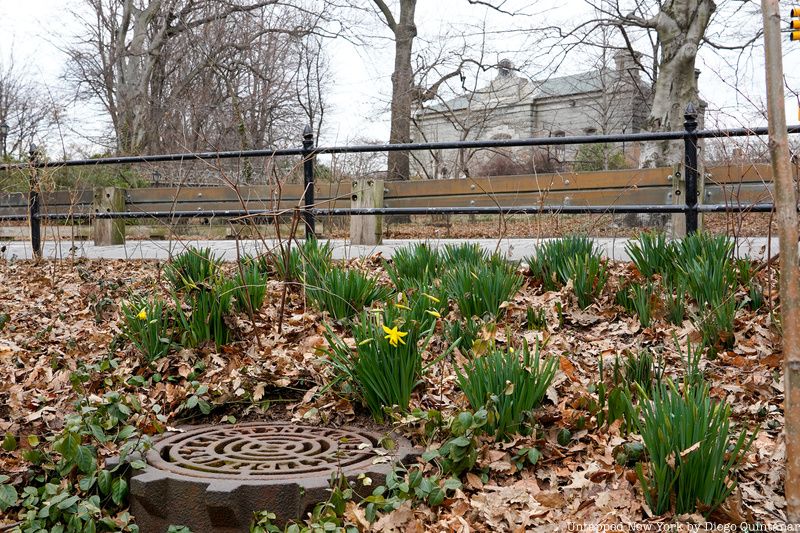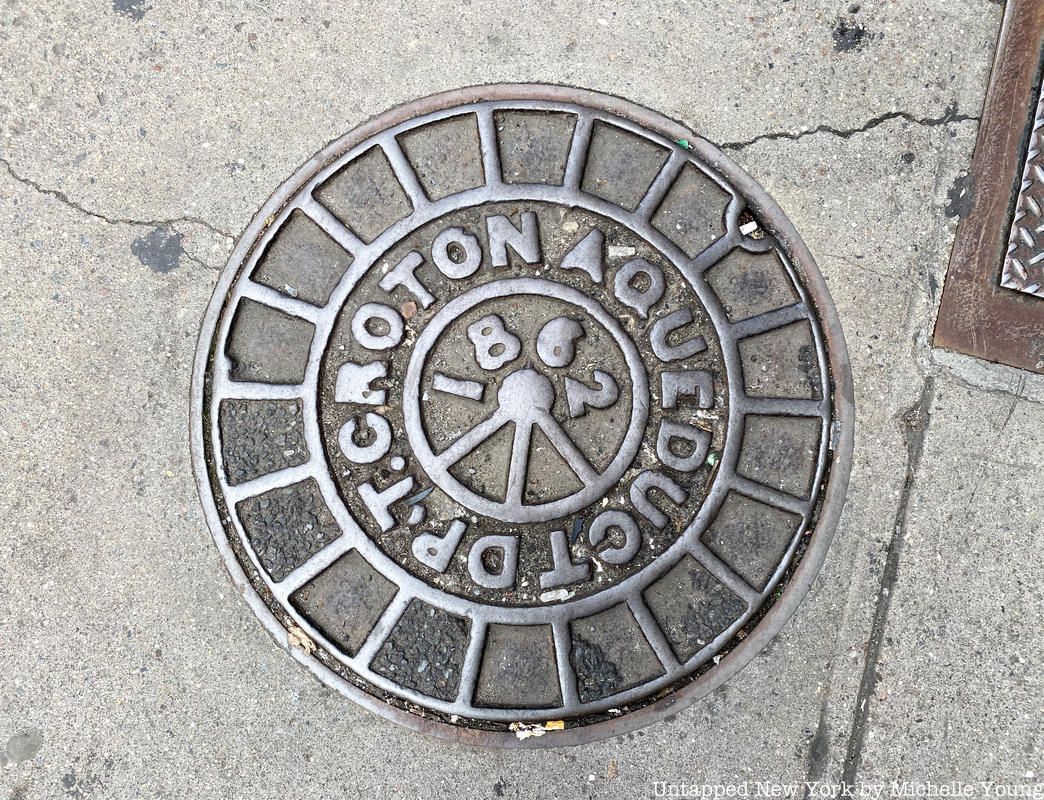Fiber Arts Take Over a Former Seaport Warehouse in NYC
See waterfalls of fabric, intricate threadwork, massive tapestries, and more!


As part of our most recent podcast episode of The Untapped New York Podcast, we went hunting for the oldest manhole cover in New York City. Dating from 1862, we believed that a Croton Aqueduct manhole cover located on a sidewalk across from the Port Authority Bus Terminal was likely the city’s oldest.
But one of the things we love most about running Untapped New York is the messages we receive from our readers and Insiders members, which often add further research to our own. In this case, an Insider member Stanley Zucker reached out to tell us that he believed there was a very old one located inside Central Park as well, one which Matt Malina of NYCH20 had shown him a few years ago.. He decided after our Insiders virtual event on manhole covers to go “hunting” for it.

Lo and behold, he located another Croton Aqueduct manhole cover dating to 1862 just off East Drive near where it crosses the 86th Street Transverse. It has an open grate, clearly something to let in water versus one to allow access for a person. If you peer in, it’s just a circular shaft ringed with stone that goes pretty deep down.

The manhole cover sits atop a wall along the 86th Street Transverse, above a gated brick-lined tunnel that appears to lead to the South Gatehouse of the Jackie Kennedy Onassis Reservoir. Some great research was done previously by “Papa Bear” from the website “Beyond Central Park” who confirmed with an NYC Department of Environmental Protection crew he ran into that “yes the shaft under that manhole cover does come down to the tunnel” and “yes the tunnel goes up to the gatehouse”.


Additionally, Beyond Central Park believes that the shaft and manhole cover was put in when the reservoir was built in 1862. Like the first reservoir of Central Park, whose remnants are buried under and around the Great Lawn, this second reservoir was part of the first Croton Aqueduct system. This reservoir has been called “new reservoir” and also “Manhattan Lake.” According to Beyond Central Park, it was built “to increase the capacity of the Old Croton Aqueduct….the water came in at the North Gatehouse and out the South Gatehouse, and that other gatehouse just east of the North Gatehouse was where the NCA came in (in 1890).”

The next question is when in 1862 this manhole cover was installed. A New York Times article published on June 30th, 1862 reports on the near completion of the south Gatehouse, so we can surmise the manhole cover was installed sometime around then. The article also addresses what happens from an engineering perspective if the reservoir overflows and here we have an early description of New York City’s infamous combined sewer overflow system which merges rainwater and sewage:
But what prevents the lake from overflowing? What is our security against an inundation at any moment? Suppose the water should fill the Reservoir and all the distributing pipes, what is to prevent the overflowing of the banks? This is done by a simple and most effective contrivance. In each gate-house there is a well-hole connecting with a sewer, so that when the water reaches a specified height, the surplus will be carried off by a never-failing self-acting process. The north sewer is 2,000 feet in length, and empties into a Central Park brook. The south sewer is 1,916 feet long, and connects with the main sewer in Seventy-ninth-street. It is 46 feet below the top bank of the Reservoir, 42 feet below the water surface, and 6 feet below the bottom of the Reservoir, so that the last drop, almost, may be drained off. The well-hole leading to the pipe vault is 40 feet deep.
It’s hard to say which one is older, the 1862 manhole cover by the Port Authority or this one in Central Park. Both say Croton Aqueduct DPT 1862 on it.


And in the writing style of the 1800s, the article concluded as follows: “The sensation of wonder and delight could only be heightened should some of our ASTORS, LAWS, or VANDERBILTS, magnanimously invite the City to take a drink, and, in our new reservoir, make us 97 acres of punch! If we can’t get the punch, however, we shall be amply gratified for the Adam’s ale.”
Check out the rest of the episodes of The Untapped New York Podcast on Apple Podcasts, Spotify, or wherever else you get your podcasts!
Subscribe to our newsletter